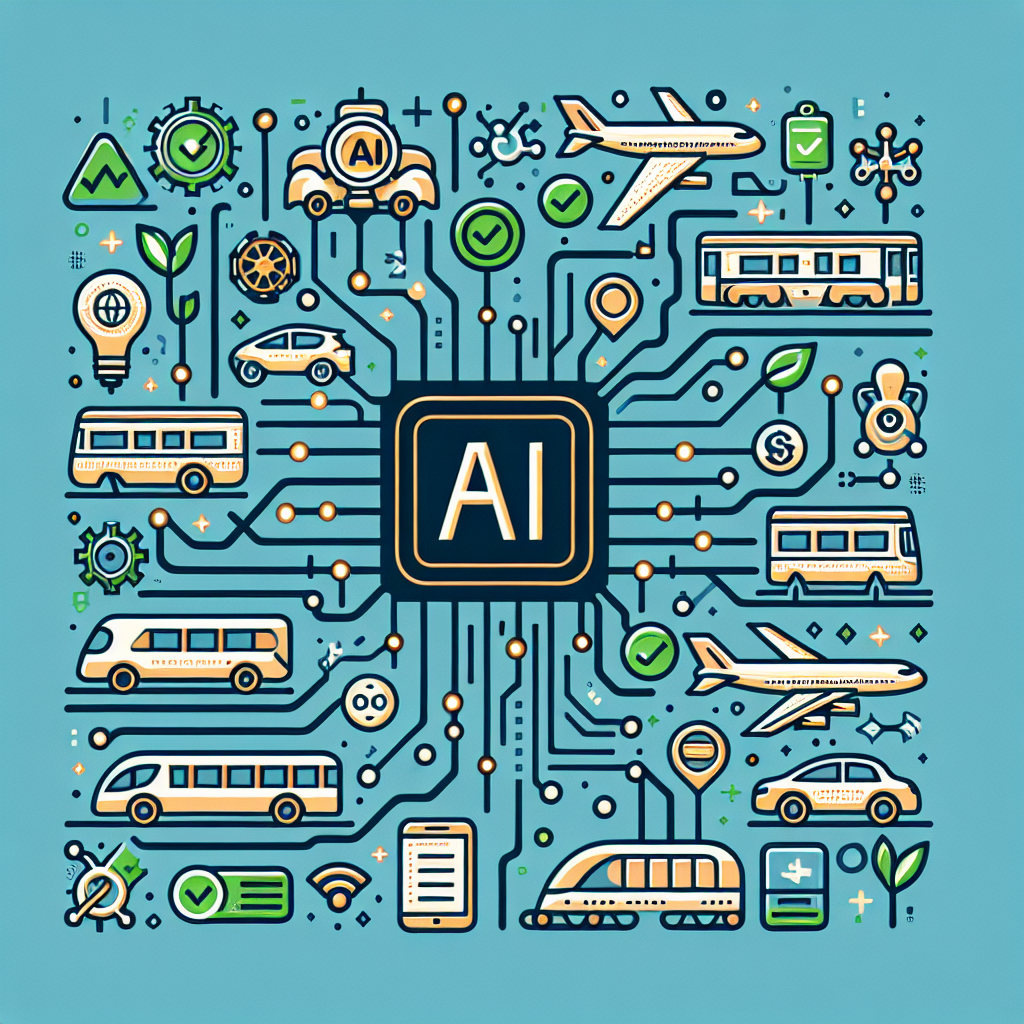Artificial Intelligence (AI) technology has been rapidly advancing in recent years, and one of the key areas where it is making a significant impact is in transportation systems. From autonomous vehicles to traffic management systems, AI software is revolutionizing the way we move people and goods from one place to another. In this article, we will explore how AI software is improving transportation systems and what the future holds for this exciting technology.
AI-powered Traffic Management Systems
One of the most visible ways that AI software is improving transportation systems is through the development of AI-powered traffic management systems. These systems use machine learning algorithms to analyze vast amounts of data in real-time, such as traffic flow, weather conditions, and road incidents, to optimize traffic flow and reduce congestion.
By predicting traffic patterns and adjusting signal timings accordingly, AI-powered traffic management systems can significantly reduce travel times and improve overall traffic efficiency. For example, in Singapore, AI-powered traffic lights have been shown to reduce travel times by up to 25% and cut fuel consumption by 15%.
Autonomous Vehicles
Perhaps the most well-known application of AI in transportation is in the development of autonomous vehicles. These self-driving cars use AI software to navigate roads, recognize objects, and make decisions in real-time, without human intervention.
Companies like Tesla, Waymo, and Uber are leading the way in developing autonomous vehicles, with the goal of improving road safety, reducing traffic congestion, and increasing mobility for people who are unable to drive themselves. While there are still challenges to overcome, such as regulatory issues and public acceptance, the potential benefits of autonomous vehicles are vast.
Predictive Maintenance
AI software is also being used to improve maintenance practices in transportation systems. By analyzing data from sensors and other sources, AI algorithms can predict when a vehicle or piece of infrastructure is likely to fail, allowing for proactive maintenance to be carried out before a breakdown occurs.
This predictive maintenance approach can help to reduce downtime, extend the lifespan of assets, and ultimately save transportation companies time and money. For example, the UK’s National Rail has implemented an AI-powered predictive maintenance system that has reduced delays by 20% and saved millions of pounds in maintenance costs.
Dynamic Pricing
In the transportation industry, dynamic pricing is a common strategy used to adjust prices based on demand and other factors. AI software is increasingly being used to optimize dynamic pricing algorithms, allowing transportation companies to maximize revenue while also ensuring that customers receive fair prices.
For example, airlines use AI-powered pricing algorithms to adjust ticket prices based on factors such as seat availability, time until departure, and competitor pricing. By dynamically pricing tickets in this way, airlines can increase their profitability while also offering customers more competitive prices.
FAQs
Q: How does AI software improve traffic management systems?
A: AI software improves traffic management systems by analyzing real-time data, such as traffic flow and weather conditions, to optimize traffic signals and reduce congestion. This can lead to shorter travel times, lower fuel consumption, and overall improved traffic efficiency.
Q: Are autonomous vehicles safe?
A: While there are still challenges to overcome, such as regulatory issues and public acceptance, autonomous vehicles have the potential to significantly improve road safety. AI software allows self-driving cars to navigate roads, recognize objects, and make decisions in real-time, reducing the likelihood of accidents caused by human error.
Q: How does AI software help with predictive maintenance?
A: AI software helps with predictive maintenance by analyzing data from sensors and other sources to predict when a vehicle or piece of infrastructure is likely to fail. This allows for proactive maintenance to be carried out before a breakdown occurs, reducing downtime and saving transportation companies time and money.
Q: How does dynamic pricing benefit transportation companies?
A: Dynamic pricing benefits transportation companies by allowing them to adjust prices based on demand and other factors, maximizing revenue while also offering customers competitive prices. AI software helps to optimize dynamic pricing algorithms, ensuring that prices are fair and profitable for the company.
In conclusion, AI software is playing a crucial role in improving transportation systems around the world. From traffic management systems to autonomous vehicles, predictive maintenance, and dynamic pricing, AI technology is helping to make transportation more efficient, safe, and convenient for everyone. As this technology continues to evolve, we can expect to see even more exciting developments in the transportation industry in the years to come.

